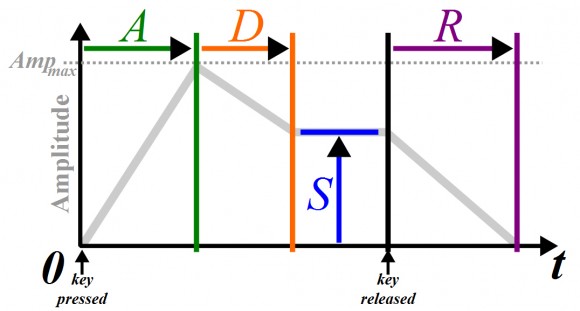In the case of a sampled piano sound, is it true to say that sustain and decay are inextricably linked qualities
That's not a yes or no question. It depends on the keyboard, and how you're using the word sustain, and how you're using the word decay. ;-) If you're talking about the
sustain level of the envelope, for a piano sound, it's always zero (because if you hold down the key, it always eventually fades to nothingness). If you're talking about the function of the
sustain pedal, that makes a key behave as if you were holding it down even after you let go. What you're actually hearing at that point, though--whether because the sustain pedal is depressed OR because or finger is till on the key--is the decay portion of the envelope.
and basically baked into the sample?
For a sampled piano sound, if it is looped, then some portion of the decay is baked into the sample and the rest is programmed in. If it is a "loopless" sample, then an entire decay is baked in. Either way, you may be able to alter it somewhat with subsequent envelope processing, compression, or other programming, but certain characteristics will remain baked in.
Are piano sounds always sampled?
No, some are modeled, and some use a combination of techniques.
How does this apply to the Roland Supernatural engine?
Roland has multiple SuperNATURAL pianos. Originally, they were a sampled/modeled hybrid, but as I understand it, the FP-90 may have had an entirely modeled implementation. At least all the rest include sampling, though, afaik. Leaving SuperNATURAL, their V-Piano is entirely modeled, as I believe is the "Pure Acoustic Piano Modeling" engine of the FP-90X.
yes.
So back to this: why is it so difficult for a board to get piano sustain /decay levels to a realistic length or level? Is it all about digitizing resolution and frequency, and requiring high memory /processing capabilities? It seems so weird to me that you can have a board that had a lot of polyphony, makes a good piano sound, but has a hard time with sustain /decay.
There are a number of variables. The qualities of the original piano that was sampled, the miking techniques, the experience of the engineer and the programmers who then manipulate those samples, at least. Looping is a tricky thing. And avoiding looping requires enormous amounts of memory (certainly by keyboard standards), OR a hardware/software operating environment that can stream samples in real time from storage.

